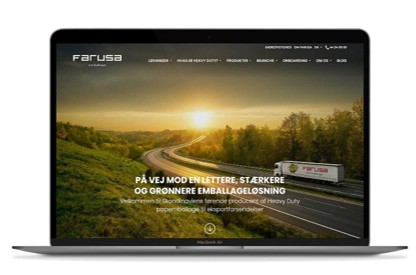♻️ Why Packaging Matters in Your CO₂ Footprint
Packaging isn’t just a necessary evil. It’s an active part of the entire value chain – from production and transport to waste management and recycling.
Traditional export packaging made from wood or plastic often carries a high carbon footprint, both due to the weight of the materials and the challenges of recycling them.
This is where Heavy Duty corrugated cardboard stands out.
📞 Ready to Take Sustainable Action?
Curious how much CO₂ you could save on your packaging?
Or how your current solutions stack up against upcoming industry requirements?
📬 Visit farusa.dk – we’re happy to help you take the first step toward more sustainable packaging.
🌍 The Advantages of Heavy Duty Corrugated Cardboard
- Lower weight = lower transport emissions
Our packaging solutions typically weigh 60–80% less than comparable wooden alternatives.
That means reduced fuel consumption – and fewer CO₂ emissions per shipment. - Reusable & 100% recyclable material
FARUSA’s corrugated packaging (made from FSC®-certified paper) can be reused multiple times after your shipment.
This helps reduce waste and supports a circular economy through recycling. - Tailored to avoid overpackaging
By custom-fitting the packaging to your products, you minimize empty space, excess materials, and oversized parcels – all key factors in many ESG reports.
 Sustainability that can be measured and documented
Sustainability that can be measured and documented
In our sustainability report, available at farusa.dk, you can explore our HotSpot analysis, which outlines our product life cycle compared to other materials.
A real-world example:
One of our customers in the industrial sector replaced wooden crates with FARUSA’s Heavy Duty packaging for a single export client.
The result?
✅ Up to 60% lower CO₂ footprint per export unit
✅ Approximately 28% lower freight costs
✅ 100% easier waste handling at the destination
✅ 100% recyclable materials
🔧 Sustainability starts with asking the right questions
When we talk to customers about sustainability, we don’t start with the material — we start with the purpose:
-
What needs to be protected?
-
Where is it being shipped to?
-
How will the product be transported?
-
What is the product’s weight?
Only then do we develop a solution that combines protection, efficiency, and sustainability.
Go to farusa.dk to responsibility to access our internal report on FARUSA’s green initiatives.





